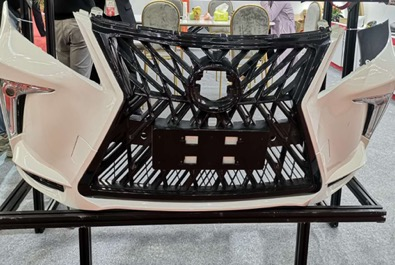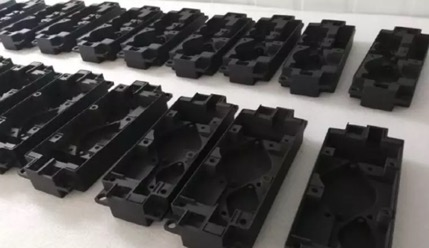BETTER TOUCH BETTER BUSINESS
Contact Sales at Lori.
With the world's first mass-produced 3D printing new energy electric vehicle exhibited at the China 3D Printing Culture Museum in March 2018, the changes brought by 3D printing to the automotive industry were like a shock, and the news quickly hit the front page of the domestic news, which can be described as no two. It is reported that a large number of 3D printed TPU, nylon and other polymer materials are used in the body structure of the car, please follow Lori to understand the application of SLS selective laser sintering process in the automotive industry.
First of all, SLS process in the vehicle modeling of the application, in the car modeling design, clay model production is a necessary link. It is mainly used to express the actual effect of car modeling for designers and decision makers to approve. In the whole design stage, to do 1:5 and 1:1 two different proportions of clay models, generally do 1 to 3. The production process (foam board making initial embryo - coating mud - rough scraping - fine scraping) is highly dependent on human technology, and the production cycle of full-size car mud model takes 5 to 7 months. The use of 3D printing technology can ensure that the design details are more efficient and low cost at the same time.

Because SLS process has the ability to generate large-size parts and the production products have excellent mechanical properties, it is especially suitable for the trial production of loading vehicles. The above figure shows the application of SLS process in automotive interior. The instrument panel parts are 2m long, 55cm wide and 70cm high, and more than 20 kinds of parts are printed by SLS technology. And the use of grinding, coating, electroplating, painting, tapping, splicing six kinds of post-processing technology, the error value of < 1mm, exquisite workmanship, detailed, the entire production process is completed in a week, compared with the traditional process to shorten the development cycle of 80%, saving 66% of labor costs and 45% of the production cost.

The 3D printing automotive exterior parts printed by the SLS process can be directly assembled on the body to verify the reliability of the product design (installation structure, part matching, structural strength), appearance modeling, etc. The above picture is the application of SLS process in the automotive exterior decoration, the intake grille is quite complex parts, the product wall thickness, the structure is crossed, the CNC way is very cumbersome, must be split into many small pieces, and then bonding, subject to the limitations of the CNC process, can not optimize the bonding process, can only rely on the master's experience repeatedly repaired. Long time cycle, poor accuracy, high scrap. The SLS nylon 3D printing sevice is the best choice for this type of product, which guarantees both strength, overall molding and accuracy in just 5 hours.
The SLS 3d printing applications application in automotive powertrain, the figure above is the pressurization chamber intake manifold produced by Ford automobile using SLS process (material: nylon + carbon fiber). Compared with the intake manifold produced by traditional process, 3D printing process products have many advantages such as lightweight, low thermal conductivity, no need to issue, integrated molding, and low cost. A Ford EcoBoost powered car equipped with the part is said to have won the 24 Hours of Daytona in 2015.
SLS process in the application of automotive structure optimization, automotive companies through 3D printing technology to achieve the complexity of the filling structure, reduce the weight of the body while improving the strength of the parts, and can absorb the energy of the impact process.

The sls 3d printing applications in automotive electronics and electrical appliances, the figure above shows the high-voltage electrical box produced in small batches by SLS nylon sintering process for BAIC new energy vehicles. The SLS process not only achieves the flame retardancy of product materials, but also meets the mould-free production of products, and the product performance is equivalent to that of traditional injection molding process. In addition, the production cycle of this batch of orders only takes 3 days. At present, the product has been used for small batch loading road test.
Copyright © 2025 Shenzhen Lori Technology Co.Ltd. | All Rights Reserved.